VET 2025_ Event Postponement
This is to inform that due to some circumstances beyond the organizer control, "2nd Edition of International Conference on Veterinary Science" (VET 2025) June 09-11, 2025 | Hybrid Event has been postponed. The updated dates and venue will be displayed shortly.
Your registration can be transferred to the next edition, if you have already confirmed your participation at the event.
For further details, please contact us at veterinary@magnusconference.com or call + +1 (702) 988 2320.
Big Data and Precision Medicine
The increased availability and complexity of data has created new opportunities and problems in veterinary epidemiology, such as converting plentiful, diversified, and fast growing "big" data into valuable animal health insights. Big data analytics are used to identify high-risk populations, combine data or processes acting at multiple scales through epidemiological modelling approaches, and harness high velocity data to monitor animal health trends and detect emerging health threats in order to better understand health risks and minimize the impact of adverse animal health issues. While big data has been utilised in human medicine and public health to improve "precision" care and analyse trends in human diseases, big data in veterinary medicine has largely been employed for geographical analytics and bioinformatics. The use of big data for animal disease surveillance, on the other hand, is a rapidly emerging field.
Precision medicine has the potential to transform medical practice and enhance treatment outcomes. While the present focus is on human medicinal applications, the veterinary profession has plenty to offer and gain. Molecular phenotyping of animal diseases will link them to human disorders with similar phenotypes for which precise therapies have been found or are being developed. Beyond describing disease pathogenesis based on similar genetic processes between humans and animals, precision medicine promises benefits to veterinary clinical practice. Veterinary Precision Medicine (VPM) is described as an optimized preventive or curative therapeutic approach based on the identification of disease biomarkers and the application of disease monitoring technologies (right animal, right medicine, right dose, right time). Field veterinarians' roles may be altered in the future as a result of the development of such technology.
- Smart Data
- Machine Learning
- Artificial Intelligence
- Veterinary Oncology
- Precision Livestock Farming (Plf)
- Veterinary Precision Medicine (Vpm)

Marco Polettini
DVM, Italy
Andreia Freitas
INIAV/REQUIMTE, Portugal
Andreia Freitas
INIAV/REQUIMTE, Portugal
Kedibone Gloria Kgosana
Sefako Makgatho Health Sciences University, South Africa
Nnenna Ugwu
Anglia Ruskin University, United Kingdom
Rubens Dias de Melo Junior
Universidade Federal de Goiás, BrazilSubmit your abstract Today
Important Alert:
X


Title : Analyzing veterinary medicine residues in food: A comprehensive guide
Andreia Freitas, INIAV/REQUIMTE, Portugal
Title : Quantifying changes in facial expression following hot-iron disbudding under procaine hydrochloride and meloxicam treatment in Holstein dairy calves
Nnenna Ugwu, Anglia Ruskin University, United Kingdom
Title : Trypanosoma vivax in and outside cattle blood: Parasitological, molecular, and serological detection, reservoir tissues, histopathological lesions, and vertical transmission evaluation
Rubens Dias de Melo Junior, Universidade Federal de Goiás, Brazil
Title : Characterization of porcine rotaviruses in the Czech Republic
Romana Moutelikova, Veterinary Research Institute, Czech Republic
Title : Determination of Circulating Foot-and-Mouth Disease Virus Serotypes in Kenya (2023)
Hellen Mutua, Foot and Mouth Disease National Reference Laboratories, Kenya
Title : Welfare for Amazonian wild animals
Eliane Cardoso Carvalho Moraes, Jungle Warfare Training Center/ Army, Brazil